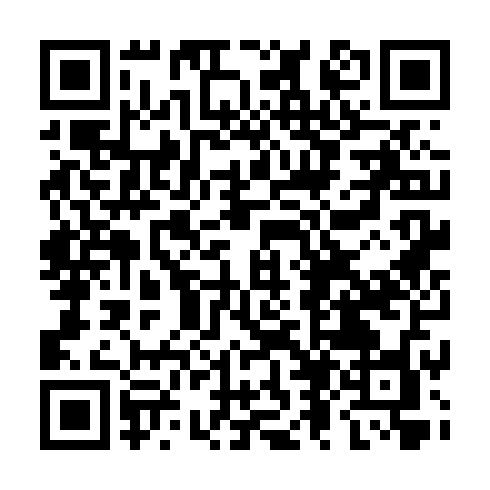Flag Retirements - Preface
| Category: | Flag Retirements - 01 Preface |
|---|---|
| Link: | Performance Example |
| Props: | none |
| Notes: | Introduction to the flag retirement guide created by Chris Blocher for Pack 729 and other Scout units |
| Notes: | Includes preparation, staffing, safety, logistics, and public relations guidance for organizing respectful flag retirement ceremonies |
Note: This page contains the text from the original pdf and has been formatted to match this website. The original pdf can be downloaded here. Used with the permisison of the author.
Chris Blocher
PACK 729
August 14, 2019
FLAG RETIREMENTS
Created for use by Pack 729 and fellow scout units.
Dedicated to Wood Badge Course S2-662-18-4, specifically, the Eagle Patrol.
Preface
After being a scout for fourteen years and then serving youth for another fifteen (and counting), it became time to impart knowledge back on those whom I would entrust to continue the journey. While Americanism has been and continues to be a strong part of Boy Scouts of America through Cub Scouts, Scouts BSA, Venturing, and Exploring, the observance and proper respect for the Flag is an essential element. It is fitting that we as leaders have developed an open relationship with our children and youth so that we can have these conversations and lessons in a supportive and caring environment.
It is my hope and faith that these lessons continue in such a manner that they outweigh the constant barrage of negativity around concepts others choose to be ignorant and obtuse about. For it is our primary purpose as leaders of these youth to provide them understanding, insight, and experience in such a manner that they can learn, understand, and decide themselves how best to use that information.
Chances are you will not see the ramifications of your actions for many years. In fact, you may never see the results at all. But that should never stop you from doing your best at delivering meaningful, impactful, and impartial knowledge to future generations of leaders.
"The spirit is there in every boy; it has to be discovered and brought to light". ~ Baden Powell
Preparations
Putting on a flag retirement ceremony does not have to be complicated or a "complete" production. There is a difference between functional and theatrical. Once the Pack has determined why it is performing the retirement, planning out the actions that need to happen becomes easier.
It is typical in our Pack for flag retirements to be done at Family Camp, both in the spring and in the fall. We do them so that we give the kids exposure to proper etiquette, allow them to practice their patriotism and respect, and to give them a forum to ask questions to a topic rarely brought up outside of the Scouting program.
1. Staff
Decide who is going to be a part of the flag retirement. You will need help.
The quantity and speed at which you want the ceremony to go often dictates how many people you should have help. Some people can help be a part of the ceremony and others can help by collecting flags and preparing them for retirement.
Preparing the flags mean they need to be folded neatly and have their grommets cut off. The grommets need to be strung on a line of metal that will not melt in the hot fire. Typically, we have used a metal coat hanger, which works extremely well for volume ceremonies. All Scouts can help fold flags and they also can earn rank requirements through this participation. If you want them to be as neatly folded as possible, I'd suggest Bears and Webelos handle this task as part of a den meeting.
I would often engage a few parents to help prepare and tend to the fire. Fire is a huge draw for kids, and we want this to be safe for all. These parents would make sure that enough wood was gathered, safety tools are set up, and water buckets are on hand. We don't teach fire building as part of rank until Webelos, so you are really limited in the number of Cub Scouts that can help with the fire.
You will also want to get some people who can participate in the ceremony itself. Whether it is reading a part of the script, placing a strip of the flag on the fire to retire, or being part of the honor guard, there is plenty of places to include all Cub Scouts, siblings, guests, and other visitors in the ceremony itself.
Also remember, that it is your duty to keep the tradition alive. Therefore, having an assistant who you can train, engage, and make comfortable performing retirements is a nice addition to your staff.
2. Location
Determine where the retirement is going to take place. You will need seating, a large enough fire pit for the flags you must retire, and access to safety equipment should something go wrong. Often a campfire ring is enough to perform the ceremony, but there is nothing to say it cannot be done in a fireplace, burn barrel, or another contained device. If you are doing this as a den and not the pack, then there is a lesser need for space.
Locally, LLELA has plenty of open space to build a retirement ceremony. Sycamore Bend has a concrete fire pit that is wide and deep. The fire ring at Hills & Hollows has been used many times to retire flags, as well as the fireplace in the building. All BSA camps typically have an open fire ring that can easily serve the purpose. You can also do this in a fire pit in your back yard or in the fireplace in an adult's home.
The biggest problem in Texas is weather. You must be conscious that the location you are using does not have strong cross winds that would blow ash. Flags often burn fast and hot, creating some residual ash. There is also the concern during extreme drought with dry brush and canopies. Make sure you have cleared your burn with the local authorities if necessary and that you have appropriate burn permits. You will also need to make sure there is not an active burn ban for your area.
3. Program
Design your program around the typical meeting agenda. Have an opening and closing. Make sure there is time for questions and answers for the youth, parents, and visitors. If you are retiring flags outside of the program structure due to volume, ensure that there is plenty of time for people to leave before you continue the retirements. You should plan for it to last no more than 30 minutes. Leave plenty of time for questions and answer for the kids (especially the younger ones). You can also include a giveback section to your program where grommets have been converted into a memento. This memento would be passed back to the service members who attended as a "Thank You" for everything they have done in service to that flag. The key here is that there is no specific program you must follow, so long as the entire program is done with respect.
Ensure that all Scouts attend in full uniform. Avoid any dangling items that could easily ignite. Any military guests should be encouraged to wear their uniform as designated by their branch of service.At the end of this document there are several versions of flag retirement ceremonies to get you started.
Safety
Prepare your fire ring to not burn any ground or endanger foliage nearby. Ensure it is not too close to any building or structure. Place water buckets near the fire ring and preferably a hose. Have some fires extinguishers nearby. You will need a shovel to safely eliminate the fire once complete.
Clear around your fire pit enough area for the ceremony. And plan on where the smoke will travel so that the audience and participants can be out of the travel path.
Be prepared for medical issues. A fire blanket is a nice thing to have in addition to your medical first aid kit. Do not forget eye wash. Ensure that your staff understands emergency plans in case of a severe burn. Remember, we are working with highly flammable objects and are engaging the fire at a minimal distance.
Take note that flags made of nylon ignite very quickly, burn very hot, and release noxious gases as they burn. Subsequently the fire should be placed at a distance so that the audience is out of the primary smoke path after placing these flags onto the fire. Also be aware that it is illegal to burn nylon in some states and municipalities, so always check current safety regulations.
When in doubt or to ensure proper scouting procedures, consult the Guide to Safe Scouting.
Public Relations
If you are doing this retirement for the public, decide what you want to allow or not allow. Pictures are often misinterpreted on social media because that is what the poster wants to happen. We are in a click happy society, so in order to protect the kids the Pack does not allow the posting of flag retirement pictures on our social media pages. We have allowed people to take pictures for personal use, but we have always stated during the welcome section of the ceremony our stance on the matter.
Make sure you invite local police, fire, and emergency service personnel to participate, especially if the ceremony is open to the public. It is a great opportunity to engage and be a part of the community. You can also invite your local city council, mayor, governor, state representative, or other elected official.
Acquiring Flags
Once a public announcement is made, be prepared to accept more flags from the public. There are very few places that do flag retirements so many will use it as an opportunity to pass along their worn flags.
I would also highly encourage reaching out to the school district, city, fire departments, and other civic institutions to find out if they have any flags that need retired. You'll find that many forget they have some stored that need taken care of.
Longhorn Council also has a stash of flags and typically is sitting on several hundred that need retired. Sometime the Council Scout Shop will ask for a unit to retire flags that they have received from the public.
Your local American Legion and VFW Post will also collect flags that need retired.
Cleanup and Disposal
Ensure all flag material is thoroughly burnt by stirring with a long stick. The flag grommets should be removed from the fire pit once cold. Ashes should be collected and ensured that they are out cold.
Ashes can be buried in a garden as a fertilizer or discarded in the waste can. If in the wilderness, ensure proper spreading to reduce the risk of re-ignition.
It may be possible to collect and recycle the polyester and nylon material into new material.
Always remember to follow Leave No Trace:
- Remove all trash
- Sweep all ash and dust
- Recycle any containers
- Clean and return borrowed equipment

